| Time |
Track
#1 |
Track
#2 |
Track
#3 |
Track
#4 |
Track
#5 |
Track
#6 |
Track
#7 |
| All sessions in this time slot will be released at 8 am JST. |
Clear Aligners
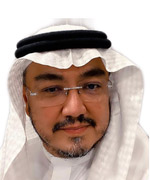 Clear Aligner; How predictable it is
Ali H. Hassan
King Abdulaziz University, Faculty of Dentistry. Alfarabi College
The demand for esthetic orthodontic treatment has increased in the past few years. Clear aligner therapy has become widespread orthodontic therapy as an esthetic substitute to conventional fixed orthodontic appliance.
The effectiveness of clear aligners is still controversial due to limited number of research. The outcome of clear aligners had been studied using different indices such as Peer Assessment Rating (PAR) scores and American Board of Orthodontics objective grading system (OGS) occlusal criteria. While these indices are objective, they are only limited to assessing crown movements only.
Evaluating both crown and root movements and position are important during different orthodontic tooth movements and post treatment, respectively. Therefore, the primary aim of this presentation is to discuss the predictability of clear aligner treatment in achieving planned crown and root movements using Cone Beam Computed Tomography (CBCT) for maxillary transverse movements and incisor antro-posterior movements. In addition, the predictability of other tooth movements will be discussed.
Clear Aligners
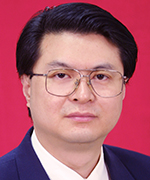 The defects, risks and countermeasures of Clear Aligner
Zhihe Zhao
Professional Experience and Education
| 2001-2019 |
Professor, West China School of Stomatology, Sichuan University, China |
| 1998-1999 |
Advanced Diploma in Orthodontics, The University of Hong Kong, Hong Kong |
| 1994-2001 |
Associate Professor, School of Stomatology, West China University of Medical Sciences, China |
| 1992-1994 |
Senior Lecture, School of Stomatology, West China University of Medical Sciences, China |
| 1987-1992 |
Ph.D, School of Stomatology, West China University of Medical Sciences, China |
| 1981-1987 |
BDS, School of Stomatology, West China University of Medical Sciences, China |
Honors and Awards
| 2016 |
The First Prize of the Sichuan Province Science and Technology Progress Award |
| 2009 |
The First Prize of the Education Ministry Science and Technology Progress Award |
| 2003 |
The Second Prize of the Education Ministry Science and Technology Progress Award |
Research Interests
Biomechanics in Orthodontics
Abstract
In recent years, clear aligner has become more and more popular. However, the clear aligner has its own defects, such as material defect, efficacy defect and mechanic defect. In addition, there are still some risks , which are mainly manifested in the risks of high initial stress, IPR risks, periodontal risks of opening deep bite, retracting anterior teeth and distalizing the molars. These defects and risks lead to more problems in clinic, therefore, the author proposes a programmed solution from the anchorage, overbite, torque controls and attachment design aspects including the design, auditing, and monitoring of using clear aligner.
Clear Aligners
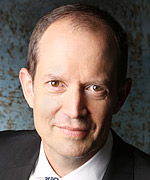 Orthodontic Treatment for the Elderly Patient: Old is New
Jorge Faber
Dr. Faber has published over 100 scientific papers and has lectured in all continents
| 2011-2017 |
Editor-in-chief Journal of the World Federation of Orthodontics |
| 2006-2011 |
Editor-in-chief, Dental Press Journal of Orthodontics |
| 2018-2020 |
Professor and researcher, Post Graduate Program in Dentistry, University of Brasilia |
| 2004-2018 |
Professor, University of Brasilia |
| 2003 |
PhD in Biology-Morphology, University of Brasilia |
| 1994 |
MS in Orthodontics, Federal University of Rio de Janeiro |
| 1989 |
DDS, University of Brasilia |
Honors and Awards
College of Diplomates of the American Board of Orthodontics 2010 Case Report of the Year, American Journal of Orthodontics & Dentofacial Orthopedics.
Research interests
Orthodontics for an ageing population
Sleep apnea
Surgery First treatment
Abstract
Relatively little attention has been devoted to the smile esthetics of elderly people. Possibly, because orthodontics has been historically entwined with the treatment of children and adolescents. Only about 20 years ago adults started to be consistently treated, and several studies have demonstrated the benefits of orthodontic treatment for these individuals, as well as improvements in their quality of life. This presentation will show the results of a prospective trial which enrolled 42 patients who were 65 or older. The protocol consisted of a 6-month-pre-established treatment time with aligners. Our results showed that patients were highly satisfied with the esthetics of the partial treatments. Most patients found that the 6-month treatment time was acceptable and that the clinical results were very positive. The orthodontic treatment significantly improved patients quality of life and self-esteem. Aligner use was comfortable, however, several specific changes in aligner prescription were necessary to solve the common problems presented by this age group. Orthodontic treatment with aligners should be considered as a valuable contribution for older patients quality of life and self-esteem.
Clear Aligners
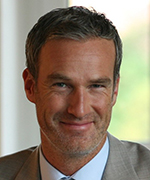 Improving the predictability of clear aligner therapy with mini-implants
Benedict Wilmes
Professional experience and Education
| 2013-2019 |
Professor at the Department of Orthodontics at the University of Duesseldorf, Germany |
| 2004-2013 |
Research fellow at the Department of Orthodontics at the University of Duesseldorf, Germany |
| 2000-2004 |
postgraduate training in orthodontics at 1996-2000 at the Department of Orthodontics at the University of Duesseldorf, Germany |
| 1996-2000 |
postgraduate training in oral surgery at the Department of Maxillofacial Surgery at University of Muenster, Germany |
| 1990-1996 |
Dentistry Student at University of Muenster, Germany |
Honors and Awards
| 2007 |
First Prize of the German Orthodontic Society |
| 2009 |
First Prize of the European Orthodontic Society |
| 2015 |
Honorary Member of the South African Society of Orthodontists |
| 2018 |
Best oral presentation from the 21st Meeting of German Society of Lingual Orthodontics |
| 2019 |
Active Member of the Angle Society (Eastern Component) |
Research interests
Non-compliant and invisible orthodontic treatment strategies (TADs, lingual orthodontics and aligner).
CAD-CAM Technologies
Abstract
Clear aligner therapy is ubiquitous in contemporary orthodontics. However, the predictability of achieving specific tooth movements with clear aligners including space closure, distalization and expansion is not absolute. The adjunctive use of customised appliances, retained with mini-implants positioned in the anterior palate, provides the clinician the opportunity to realize specific treatment objectives with greater precision and accuracy. They can be used concomitantly, or as an intermediary step prior to the fabrication of clear aligners.
Clear Aligners
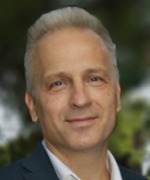 Degradation of aligners: clinical variables and concerns
Theodore Eliades
Professional Experience and Education
| 2017- |
Interim Director, Institute of Oral Biology, Center of Dental Medicine, University of Zurich |
| 2013- |
Director of Research Center of Dental Medicine, University of Zurich |
| 2011- |
Professor and Director, Clinic of Orthodontics & Pediatric Dentistry, Center of Dental Medicine, University of Zurich |
| 2005-2011 |
Associate Professor, Department of Orthodontics, Aristotle University of Thessaloniki, Greece |
| 2019 |
DSc, University of Manchester, UK |
| 2002 |
PhD, University of Manchester, UK |
| 2002 |
Doctorate in Medical Sciences, University of Athens, Greece |
| 1994 |
Certificate of specialty, Ohio State University, USA |
| 1993 |
MS, Ohio State University, USA |
| 1990 |
Diploma in Dental Surgery, National and Kapodistrian University of Athens, Greece |
Honors and Awards
| 2017 |
invited Milton Sims Visiting Professor, University of Adelaide |
| 2015 |
Jan Taylor Visiting Professor, Australian Foundation for Orthodontic Research and Education |
| 2014 |
Northcroft memorial lecture, British Orthodontic Society |
| 2014 |
Fellow, Institute of Physics |
| 2010 |
Fellow, Royal Society of Chemistry |
| 2009 |
Fellow, Institute of Materials Minerals and Mining |
Research Interests
Mechanics of materials and tissues, xenoestrogenicity of polymers, degradation of materials, retrieval analyses clinical aspects of materials application and treatment efficiency, dental hard tissues and bonding
Abstract
The purpose of the lecture is to highlight the changes occurring during the intraoral service of aligners which includes an array of compositional, surface, structural and mechanical effects. The lecture has two axes: the establishment of effects reported to involve softening, decrease in roughness in the areas which are coming in contact with composite attachments, thereby substantiating a wear mechanism; changes in color, and structural alterations are also described. Having demonstrated the foregoing effects, a number of potential effects on the clinical aspects of aligner treatment and their biological reactivity are discussed. Evidence from studies reporting effect of aligner on oral flora, the release of compounds such as attrition products, release of BPA and monomers as well as attachment composite ageing will be shown. In addition, the assessment of their biological reactivity with emphasis on the cytotoxicity and xenoestrogenicity will be discussed, as well as the impact on efficiency arising from the alteration of hardness, stiffness and relaxation of materials. The implication of these changes and effects in everyday practice will be postulated and guidelines for the minimizing of relevant unwanted effects will be proposed.
|
Open Bite Treatment
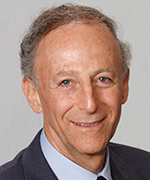 Stability of open bite treatment with spur therapy
Roberto Justus
PROFESSIONAL EXPERIENCE AND EDUCATION
| 2014 to 2019 |
Adjunct Professor, AT Still Univ., Graduate Dept. of Orthodontics, Phoenix, AZ, USA |
| 2010 to 2015 |
WFO President |
| 2007 to 2010 |
Chair, WFO Orthodontic Boards Committee |
| 2005 |
Examiner, Italian Board of Orthodontics |
| 2003 to 2004 |
President, ABO College of Diplomates |
| 2002 to 2019 |
Examiner, ABO |
| 1996 to 2019 |
AJODO (reviewer) |
| 1995 to 1998 |
President Latin American Assoc. of Orthodontists |
| 1994 to 2019 |
Editorial Board Member: "Seminars in Orthodontics" and "Revista Clinica de Ortodontia" (Dental Press, Brazil) |
| 1990 |
Diplomate ABO |
| 1988 to 2019 |
Research Director, Graduate Dept. of Orthodontics, Intercontinental Univ., MEXICO |
| 1970 to 2019 |
Professor orthodontics, School of Dentistry, Technological Univ. of Mexico, MEXICO |
| 1969 to 1970 |
Professor graduate orthodontics, Dept. of Orthodontics, UNAM, MEXICO |
| 1968 |
MSD, Dept. of Orthodontics, Univ. of Wash., Seattle, USA |
AWARDS
| 2018 |
"Honorary Member Award", British Orthodontic Society |
| 2013 |
"Louise Ada Jarabak Award", American Assoc. of Orthodontists Foundation |
| 2011 |
"Dale B. Wade Award", ABO |
| 2007 |
"Dentistry Distinguished Professor Award", Universidad Tecnologica de Mexico |
| 2002 |
"National Orthodontic Excellence Award", Mexican Association of Orthodontists |
| 1993 |
"Best Lecturer 1993 Meeting Award", Latin American Association of Orthodontists, Lima, Peru |
| 1966 |
"Best Dental Student in Mexico Award", Diario de Mexico newspaper |
HONORS
| 2018 |
WFO Executive Committee honored me for "Promoting the establishment of Orthodontic Certifying Boards around the world" |
| 2015 |
Springer Publishing Co. honored me for authoring the orthodontic textbook: "Iatrogenic Effects of Orthodontic Treatment, Decision Making in Prevention, Diagnosis, and Treatment" |
| 2012 |
Univ. of Wash honored me as "2012 Kokich Shapiro Visiting Scholar" |
| 2010 |
Seminars in Orthodontics honored me as "Guest Editor" March 2010 issue |
| 2010 |
Mexican Association of Orthodontists honored me naming its 2010 meeting as the "Roberto Justus 43rd Annual Meeting" |
| 2006 |
Intercontinental Univ., Graduate Dept of Orthodontics, honored me for "Excellence as Professor and Research Director" |
RESEARCH INTERESTS
Clinical orthodontics
Abstract
The high relapse incidence of anterior open bite malocclusion is frequently due to an anterior tongue rest posture. A maxillary fixed intraoral appliance with spurs is recommended to modify tongue posture. Research with this appliance in a large sample of anterior open bite patients demonstrated long term stability post retention.
You will learn why:
-Long term stability of open bite closure is no better than 80%.
-Myofunctional therapy with oral exercises is ineffective in closing open bites.
-TADs used for anterior open bite closure might not have a stable outcome.
-Fixed intraoral spurs are recommended to establish a normal tongue rest posture (a new engram).
-Spurs modify tongue posture and also interrupt digit sucking habits.
-The anterior open bite closes with spurs, without using brackets or wires.
-Long term stability post retention is achieved when spurs are used.
-Spurs are indicated or contraindicated.
-Early correction of open bite protects roots from resorbing.
-Intraoral spurs do not provoke psychological problems.
You will learn the:
-Risk factors for anterior open bite.
-In office construction of the spur appliance.
Open Bite Treatment
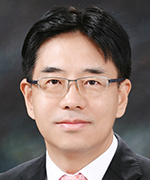 Strategic approach to treat the open bite efficiently and to retain the stable result
Tae-Woo Kim
Education
| 1983 - 1984 |
Internship, Seoul National University, Dental Hospital |
| 1984 - 1986 |
Residency, Seoul National University, Dental Hospital, Department of Orthodontics |
| 1986 |
Master of Dental Surgery. Seoul National University, Graduate School |
| 1993 |
Ph.D, Seoul National University, Graduate School |
Academic activities
| May 1990 - Mar. 1994 |
Fellow Doctor, Department of Orthodontics, Seoul National University Dental Hospital |
| Mar. 1994 - Mar. 1996 |
Full-time Lecturer, Department of Orthodontics, College of Dentistry, Seoul National University |
| April 1996 - Mar 2001 |
Assistant Professor, Department of Orthodontics, College of Dentistry, Seoul National University |
| April 2001 - Mar 2004 |
Associate Professor, Department of Orthodontics, College of Dentistry, Seoul National University |
| Dec. 1995 - Dec. 1997, Jul. - Sep. 2011 |
|
Visiting Professor, Department of Orthodontics, School of Dentistry, University of Washington |
| Aug. - Oct. 2007 |
Visiting professor, Department of Orthodontics, University of California, Los Angeles |
| April 1994 - Dec. 1995, April 1998 - Mar. 2002 |
|
Editor-in-Chief, Korean Journal of Orthodontists |
| April 2014 - Mar. 2016 |
President, Korean Association of Orthodontists |
Honors and Awards
Oct. 2017 Kwan Song Award, Korean Association of Orthodontists
Sept. 20-21, 2018 Kokich-Saphiro lecture, University of Washington
Research Interest
TMD, open bite, mini-implants and long-term stability
Abstract
Open bite has been one of interesting fields to me, since I started orthodontic residency in 1983. In my department, I have many open bite cases, especially with TMD, because they are referred from local clinics and other orthodontists. Seoul National University Dental Hospital is the final destination of problem cases in South Korea. I think more than 60 % of my patients are open bite cases.
Anterior open bite is a very challenging malocclusion even for excellent orthodontists. It is very difficult to diagnose differentially and to retain the post-treatment result well, because one case may have several etiologic factors. Since MRI and CT were used to screen the etiologic factors, I have realized once more that 'open bite' is one sign of different diseases caused by thumb sucking, tongue thrusting, low tongue posture, mouth breathing, macroglossia, temporomandibular disease and ankyloses of anterior teeth. It cannot be overemphasized to try to find and to remove the causing factors first. According to the causes the open bite should be treated differentially. In this lecture, the following contents will be presented.
1)Etiologic factors of open bite
2)How to find and resolve the etiologic factors
3)Mechanics to close the open bite efficiently
4)Strategies to obtain the long-term stability
Open Bite Treatment
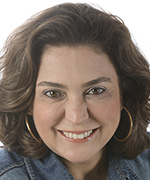 Open Bite: Are we treating the right causes?
Flavia Artese
Associate Professor of Orthodontics, Rio de Janeiro State University;
MSc and PhD in Orthodontics, Federal University of Rio de Janeiro;
Diplomate of the Brazilian Board of Orthodontics,
Member of the Angle Midwest Society,
Editor in Chief of the Dental Press Journal of Orthodontics,
Chair of the 10th International Orthodontic Congress.
Abstract
Anterior open bite is considered one of the malocclusions of most difficult treatment, especially regarding stability. The literature presents many researches on this subject, but with controversial information. There are disagreements on the definition of open bite, its etiology and types of treatment. Possibly, the lack of consensus on the etiology of the anterior open bite may have led to different types of treatment and can be the explanation for the high level of relapse of this malocclusion. The purpose of this presentation is to review the concepts of
anterior open bite focusing on etiology, treatment methods and their stability and present criteria for the diagnosis and treatment of this malocclusion, based in its etiology, with examples of treated cases, stable for over10 years.
|
Class III Treatment
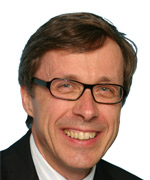 Miniplate anchored class III orthopedics with control of maxillary and mandibular rotations
Hugo De Clerck
Departement of Orthodontics, University of North Carolina at Chapel Hill, US
Miniplates resist better high discontinuous forces than miniscrews do. Therefore they can be used for intermaxillary orthopedic traction. Class III elastics can be fixed between Bollard anchors on the buttress of the maxilla and in the canine region of the mandible in young growing patients. By stretching of the circummaxillary sutures, the forward growth of the maxilla can be increased, resulting in an anterior rotation of the zygomatico-maxillary complex. Thank s to the sk eletal anchorage, the amount of protraction of the midface is about double of the amount of protraction obtained with face mask . However, new evidence shows that also the chin can be moved back ward without posterior rotation of the mandible, thank s to modeling processes at the gonial angle. This results in a modification of the shape rather than the size of the lower jaw. Furthermore, modeling at the glenoid fossa repositions the mandible slightly posteriorly. The combination of growth modifications of the maxilla and the mandible may result in an important improvement of facial esthetics, also in cleft patients. Successful and stable orthopedics depend on good control of maxillary and mandibular rotations.
Class III Treatment
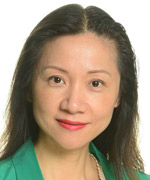 Bone-Anchored Maxillary Protraction in Cleft Patients with Class III malocclusion
Prof. Yijin Ren
Professional Experience and education
| Since 2007 |
Full professor, Medical Faculty, University of Groningen, The Netherlands |
| Since 2008 |
Department head, Program director, Dept Orthodontics, University Medical Centre Groningen, The Netherlands |
| Since 2012 |
Principal investigator, W.J.Kolff Institute for Biomedical Engineering & Materials Science, University of Groningen, The Netherlands |
| Since 2015 |
Director, W.J.Kolff Institute for Biomedical Engineering and Materials Science, |
| Since 2019 |
Executive MBA, London Business School, London UK |
| 2019-2024 |
Associate editor European Journal of Orthodontics |
| 2018-2023 |
Editorial board Progress in Orthodontics |
| 2018-2023 |
Editorial board member Progress in Orthodontics |
| 2016-2019 |
Editorial board member Colloids and Surfaces B: Biointerfaces |
| 2016-2021 |
International Editorial board of Chinese Journal of Orthodontics |
| 2013-2018 |
Associate editor Progress in Orthodontics |
| 2007-2027 |
International Editorial Board of Shanghai Journal of Stomatology |
| 2010-2017 |
Editorial board member The Open Dentistry Journal |
| 2010-2019 |
Editorial board member European Journal of Orthodontics |
Honors and Awards
| 2003 |
Best 5-year orthodontic paper Award, Dutch Orthodontic Society |
| 2007 |
Distinguished Scientist Award - Young Investigator Award, IADR |
| 2007- |
Visiting professorship, Wuhan University Dental School |
| 2007 |
Best paper of the year (co-author), Dutch Journal of Dentistry |
| 2010 |
Outstanding Alumni Award , Wuhan University |
| 2008-2009 |
Best Poster award (co-author), by European Orthodontic Society |
| 2012 |
Research award (co-author) by Densply-Lomberg |
| 2007, 2008, 2009, 2013 |
|
Best Poster awards (co-author), European orthodontic Society |
| 2014 |
Luo Jia Distinguished Professor by Wuhan University |
| 2016 |
Paper of the year - Award for societal impact (co-author), W.J.Kolff Institute of Biomedical Engineering & Materials Science |
| 2019 |
The VBM award (co-author), Society for the Biology of the Mouth) |
Research Interests
3D imaging and digital workflow in orthodontics
Oral bacterial biofilms and dental/orthodontic interventions
Mechanisms and solutions for biomaterial associated infection
Development of smart (nano) biomaterials for customized clinical applications
Abstract
Here we report a prospective controlled study evaluating the effect of bone-anchored maxillary protraction therapy (BAMP) on the skeletal and airway changes in cleft children with Class III malocclusion using CBCT-derived 3D surface models. Thirty-five unilateral complete cleft lip and palate patients with maxillary deficiency were included. CBCT scans were obtained from each patient before BAMP, 1.5 years and 3.5 years after. Age-matched untreated groups including both cleft subjects and non-cleft subjects served as controls. Majority of the patients showed improved lip projection towards more convex facial profile. The most significant skeletal changes on 3D surface models were observed at the zygomatic regions and at the maxillary complex in favor of the Class III treatment in cleft patients with maxillary deficiency. In addition, significant volumetric increase of the total airway and nasopharynx volumes were observed to a level comparable to a non-cleft control group with a skeletal Class I or mild Class II relationship. Taking into consideration of the effect of normal growth, BAMP can be recommended as an effective therapy for cleft lip and palate patients with favorable skeletal outcome and without impeding development of the airway.
Class III Treatment
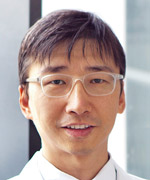 Is age a limiting factor in adult orthopedics for class III and asymmetry? Quest for suture biology
Kee-Joon Lee
Abstract
Transverse discrepancy is a common skeletal problem which necessitates radical orthopedic correction. The orthodontic envelope of discrepancy is reportedly narrow in the transverse direction, which is why surgically assisted palatal expansion is recommended particularly in grown-up patients. Recently a number of maxillary expanders have been introduced including bone-borne and tooth-and-bone-borne expanders (MARPE). Nonetheless, the expansion modalities have been controversial, due to the lack of understanding on suture biology. Latest findings on the characteristics of craniofacial sutures reveal clues for some critical points, such as speed of expansion, maximum possible age for success of orthopedic expansion, failure rate and optimal expander design etc., along with demonstration of nonsurgical correction of various skeletal problems including Class III and asymmetry
CV
Dr. Kee Joon Lee is the chairman of the Department of Orthodontics, Yonsei University College of Dentistry, Seoul, Korea. He received DDS and PhD degree from Graduate school, College of Dentistry, Yonsei University. He completed the orthodontics specialty training in Yonsei University. He was a visiting scholar at the Department of Biochemistry, University of Pennsylvania School of Dental Medicine from 2002 through 2004 and at the Division of Plastic Surgery, the Children’s Hospital of Philadelphia from 2010 to 2011. He was an adjunct professor at the Department of Orthodontics, University of Pennsylvania between 2016 and 2019. He has contributed many book chapters on biomechanics of miniscrew driven orthodontics, non-extraction treatment in adults, latest lingual orthodontic mechanics and surgery first approached using TADs. He is the first who demonstrated the miniscrew assisted rapid palatal expander (MARPE) for adults in AJODO, which was cited by many other authors. He has published many articles and case reports regarding the treatment of non-eruption, and total arch movement for hyperdivergent face in orthodontic journals including cover issues in AJODO. His fields in research include clinical biomechanics regarding TADs application and the suture and bone responses to orthodontic stimulus. He has served as a reviewer in major orthodontic journals, including AJODO, Angle Orthodontists and European Journal of Orthodontics. He has been invited to many international orthodontic conferences around the world.
Professional experience and education
2013- Professor, Department of Orthodontics, College of Dentistry, Yonsei University
2010-2011 Visiting scholar, Division of Plastic and Reconstructive Surgery, The Children’s Hospital of Philadelphia
2010-2011, 2016-2019 Adjunct professor, University of Pennsylvania
2010-2011 Adjunct professor, Temple University
2008-2013 Associate professor, Yonsei University
2004-2008 Assistant professor, Yonsei University
2002-2004 Visiting scholar, Department of Biochemistry, School of Dental Medicine, University of Pennsylvania
1997-2004 Graduate school, College of Dentistry, Yonsei University (PhD)
1998-2001 Medical officer, ROK military hospital
1999-2000 United Nations Mission in Western Sahara
1994-1998 Intern & Resident Department of Orthodontics Yonsei University
Honors and awards
2016 Fu Minkui APOS Trends Award for best clinical article, 10th Asian Pacific Orthodontic Conference
2012 Excellent exhibition award, 71st Annual Meeting of Japanese Orthodontic Society
Research Interests
Orthodontic biomechanics using finite element analysis
Suture biology applied to adult orthopedics
|
Problems in Orthodontic Treatment
Problems in Orthodontic Treatment
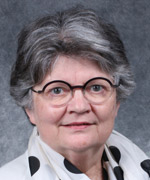 An evidence based approach to external apical root resorption
Anne Marie Kuijpers-Jagtman
Orthodontists are afraid of causing external apical root resorption (EARR) in their patients as an unwanted side effect of orthodontic treatment. About half of all orthodontically moved teeth show mild to moderate EARR (< 2.5 mm), but luckily only a small percentage end up with severe apical root resorption, defined as a loss of 4 mm of the original root length or more than a third of the root. On the other hand, on the microscopic level over 90% of all orthodontically moved teeth exhibit EARR.
The etiology of EARR is still not fully understood resulting in much uncertainty about how to prevent EARR and how to manage it when it occurs during orthodontic treatment. Furthermore, little is known about the long-term stability and prognosis of affected teeth, including their mobility, vitality, and periodontal status. Despite these uncertainties, patients need to be treated. The Dutch Association of Orthodontists took the initiative to develop a clinical practice guideline through a rigorous methodological approach to support clinicians in making treatment decisions and informing their patients.
Abstract
An evidence based approach to external apical root resorption
Problems in Orthodontic Treatment
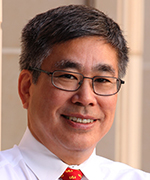 Orthodontic Root Resorption : An Update for the Clinician
Glenn Sameshima
Professional Experience and Education
| 2003-current |
Chair and Program Director, USC Orthodontics |
| 2000-current |
Associate Professor, Department of Orthodontics, Dept of Craniofacial Biology, University of Southern California, USA |
| 1994-2000 |
Assistant Professor, Department of Orthodontics, University of Southern California, USA |
| 1991- |
PhD, Craniofacial Biology, University of Southern California, USA |
| 1989- |
Certificate, Orthodontics, University of Southern California, USA |
Research Interests
Orthodontic Root Resorption
Imaging of Orthodontic Root Movement
Digital Technology and Patient Education
Abstract
We all learned that every time we move a tooth, root resorption occurs. However it is reversible and temporary unless it starts at the root apex. Severe root resorption is fortunately rare but nevertheless is still an important consideration. This presentation will summarize what we currently know from all the different studies that have been done ranging from animal studies to theoretical models to genetic studies but mostly from clinical studies and clinical experience. Eight of the most frequently asked questions will be answered that will provide the clinician with the most up to date knowledge focusing mainly on clinical management of root resorption if found at progress or at the end, and which patients are at greater risk.
Problems in Orthodontic Treatment
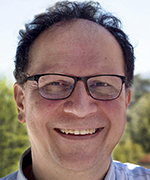 Occlusal interferences: How do they influence the orthodontic tooth movement?
Stavros Kiliaridis
Professional Experience and Education
Professor and Head, Dept. of Orthodontics, University of Geneva, Switzerland, 1999 until present.
Professor and Head, Dept. of Orthodontics, University of Athens, Greece, May 2008 to September 2009.
Associate Professor, Dept. of Orthodontics, Goteborg University, Sweden, 1990 to 1999.
Coordinator of specialist education in Orthodontics, Goteborg University, Sweden, 1996 to 1999.
Odont. Dr Ph.D. Dept. of Orthodontics, Goteborg University, Sweden, 1986.
Certificate in Orthodontics, Goteborg University, Sweden, 1984.
D.D.S. Graduation from the Dental School, University of Thessaloniki, Greece, 1979.
Honors and Awards
The European Orthodontic Society Essay Award, London, 1988.
Alton Moore Lecture, University of Washington, Seattle, USA, 2002.
Houston Award, Dudic, Giannopoulou, Kiliaridis, European Orthodontic Society, 2005
Senior Robert Frank Award, Clinical Research, Christou, Kiliaridis, IADR European Division, 2007
Senior Robert Frank Award, Clinical Research, Schimmel, Kiliaridis, Muller, IADR European Division, 2012
Sheldon Friel lecture, European Orthodontic Society, 2015
Coordinator of the European Orthodontic Teachers Forum 2007 to 2019.
President of the Network for Erasmus Based European Orthodontic Programmes, NEBEOP 2017 to 2019.
Research Interests
Clinical and experimental studies on masticatory function and craniofacial growth.
Methods to evaluate the functional capacity of the masticatory muscles.
Dentofacial growth and oral function in patients with Neuromuscular diseases.
Clinical and experimental studies on postemergent continuous tooth eruption.
Influence of functional appliances on dentofacial structures and masticatory muscles.
Over 220 research papers and book-chapters
Abstract
In a previous study (Dudic et al 2013) we found that during an experimentally induced orthodontic tooth movement the presence of interarch interferences decreased the amount of tooth displacement. In the treatment of Class II cases the shift of the molar occlusion from Class II to Class I is often essential to achieve an optimal treatment result. Our hypothesis was that the functional capacity of the masticatory musculature could be a predictive variable in determining the functional appliance treatment outcomes in Class II/1 malocclusion children. During the last decade, we tested this hypothesis in three different samples treated with Tween blocks, Schwarz activators and Andreasen activators, and we found that children with lower pre-treatment maximal molar bite force showed more mesial movement of mandibular first molars, distal movement of maxillary first molars, and larger change in molar class during treatment. Children with thinner pre-treatment masseter muscles demonstrated more mandibular first molar mesialisation and mandibular incisor proclination (Antonarakis, Kiliaridis, 2015, Antonarakis et al 2012, Kiliaridis et al 2010)
In conclusion, the initial condition of the masticatory muscles may partly determine treatment outcomes. Children with thinner pre-treatment masseter muscles or weaker bite force show greater dentoalveolar changes.
|
Biology in Orthodontics
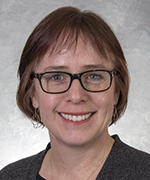 Biologic control of tooth movement: is it possible and, if so, how?
Nan E. Hatch
Dr. Nan Hatch is an Associate Professor of Dentistry, the Lysle E. Johnston Junior Collegiate Professor of Orthodontics and Chair of the Department of Orthodontics and Pediatric Dentistry at the University of Michigan. Dr. Hatch received her clinical orthodontic training and a PhD in Molecular and Cell Biology from the University of Washington in Seattle. Dr. Hatch has previously served as the Great Lakes Association of Orthodontists representative to the American Association of Orthodontists's Council on Scientific Affairs, as president of the Craniofacial Biology Group of the International Association for Dental Research and on the Awards Review Committee of the International Association for Dental Research.
Dr. Hatch is certified by the American Board of Orthodontists. She has mentored numerous orthodontic residents on their research, six of whom have won research awards from the American Association of Orthodontists or the American Association of Orthodontists Foundation. Dr. Hatch's research interests include basic and translational research in bone biology and the molecular etiology of craniofacial anomalies, as well as the deveopment of biologic mediators for the control of orthodontic tooth movement. Her research has been funded by the American Association of Orthodontists Foundation, The Hartwell Foundation, and the National Institute of Dental And Craniofacial Research.
Abstract
Orthodontic forces stimulate cell signaling that leads to tooth movement via osteoclast-mediated resorption of alveolar bone adjacent to the pressure side of tooth roots. Because tooth movement is a biologic process, drugs developed to modulate inflammatory cell signaling pathways and/or bone cell activity can be utilized to control orthodontic tooth movement. This presentation will provide current results demonstrating the impact of locally injected drugs for increasing the speed of tooth movement, enhancing orthodontic anchorage during tooth movement, and inhibiting orthodontic relapse after movement. Results and discussion of potential iatrogenic effects of delivered drugs will be presented. Novel methods for polymer-based drug delivery systems to control movement of specified teeth in the mouth will also be discussed.
Biology in Orthodontics
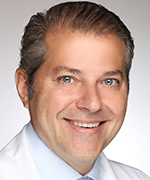 Orthodontic movement through alveolar atrophic bone
Adilson Luiz Ramos
| 1994 - 2020 |
Associate Professor, State University of Maringa, Brazil |
| 2019 - 2020 |
Director of the Brazilian Board of Orthodontics |
| 2003 - 2006 |
Former Editor-in-chief of the Dental Press Journal of Orthodontics , the official publication of the Brazilian Association of Orthodontics |
| 1998 - 2001 |
PhD at State University of Sao Paulo UNESP, Araraquara, Brazil |
| 1992 - 1995 |
MS in Orthodontics at University of Sao Paulo USP, Bauru, Brazil |
| 1989 - 1992 |
Residence Program at Craniofacial Anomalies Rehabilitation Hospital HRAC, University of Sao Paulo USP, Bauru, Brazil |
| 1995 - 2020 |
Member of the Brazilian Association of Orthodontics |
| 1998 - 2020 |
Member of the World Federation of Orthodontics |
| 1996 - 2020 |
Member of the American Association of Orthodontics |
| 2019 - 2020 |
Guest Member of the Angle Society of Orthodontics, North Atlantic Component |
Abstract
Orthodontic tooth movement through an alveolar atrophic ridge is a treatment alternative for improving the surrounding bone implant dimensions. Sometimes, such challenging movement is needed to close missing teeth arch spaces and to correct an occlusal discrepancy. This presentation will show some studies that discuss the advantages and side effects of such movement, as , for example, root resorption and bone dehiscence. During the presentation, clinical situations will illustrate this important orthodontic strategy, particularly in interdisciplinary treatments.
|
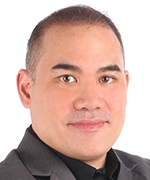 Title : Pre-restorative/ prosthodontic orthodontics : Balancing the Esthetic and Functional Needs of our Patients
Martin Antonio V. Reyes
Professional Experience and Education
| 1996 |
Doctor of Dental Medicine University of the Philippines |
| 1999 |
Certificate of Proficiency in Orthodontics University of the Philippines |
| 2003 |
Masters of Science in Dentistry University of the Philippines |
| 2003-2016 |
Visiting Consultant Orthodontics Asia/Arrail Dental Shanghai China |
| 2004-Present |
Professorial Lecturer University of the Philippines Post Graduate Program in Orthodontics |
| At Present |
Visiting Professor Orthodontic Department St. Mary's Hospital Seoul Korea |
| 2010-Present |
CEO Dentphix Inc Ortigas East Pasig |
Honors and Awards
Philippine Dental Association : Outstanding President Affiliate Society
Research Interests
Skeletal Maturity Indicators for Orthodontics
Bracket Mesh Interphase
Abstract
Over the past decade, advances in technology have paved the way for newer restorations fulfilling both esthetic and functional needs of our patients. Long span restorations, bridges, and plates have stepped aside for modern day bio compatible fixtures with superior quality making our treatment much more conservative bridging the gap between what is esthetically pleasing and functionally stable. One thing that has not changed much is the importance of occlusion as one of the main considerations in the treatment planning for restorative and prosthodontic cases. In this modern day of dentistry, planning for veneers, crowns, bridges and implants requires a TEAM APPROACH in order to achieve the best possible outcome. The orthodontic specialist plays a very important role in the establishment of occlusion placing the teeth in the best possible positions that will allow easier placement of the restorations in a much more ideal manner while maintaining a stable and harmonious bite that will ensure the longevity of not only the restoration itself but the supporting structures as well. This lecture will put emphasis on some treatment planning guidelines for adjunctive orthodontic procedures such as space management, control of midline, strategic movement of molars , planning for implants and veneers and other procedures that will help to establish both an eshtetically pleasing smile, healthy look and stable bite in preparation for other restorative and prosthodontic treatment.
.
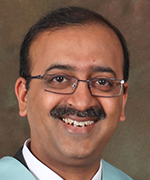 Contemporary Orthodontic management of loss of maxillary central incisors
Jayesh S. Rahalkar
Brief Biodata
Dr. Jayesh S. Rahalkar
MDS(Bom), M Orth RCS (Edinburgh)(UK), FDS RCS (Edingburgh)(UK), DNB (Orthodontics), Diplomate of Indian Board of Orthodontics (DIBO)
Professional experience & Education
- Mini Residency at Yonsei University, Seoul, South Korea in 2016
- FDS RCS (Edin)(UK) in 2014 by the Royal College of Surgeons of Edinburgh, United Kingdom
- Diplomate of National Board (DNB) in the subject of Orthodontics by the National Board of Examinations, New Delhi in 2005.
- M Orth RCS (Edin) (UK) in 2004 by the Royal College of Surgeons, Edinburgh, United Kingdom.
- Board Certified Diplomate of Indian Board of Orthodontics (DIBO) in 2003.
- Master of Dental Surgery (MDS) in Orthodontics and Dentofocial Orthopedics from Govt. Dental College & Hospital, Mumbai in 1996.
- Bachelor of Dental Surgery (BDS) from the Govt. Dental College & Hospital, Mumbai, in 1992 by standing first class first in the University of Bombay
- Exclusive Orthodontic Practice since 1996 till date
- Former Head; and currently working as Professor and PG Guide, Department of Orthodontics at Dr.D.Y.Patil Dental College and Hospital, Pimpri, Pune
- Honorary Consultant Orthodontist at Deenanath Mangeshkar Hospital, Pune. He is also a team member of the complete cleft care team at Deenanath Mangeshkar Hospital.
Honours and Awards
- Past - Chairman, Indian Board of Orthodontics 2018-2019
- Director of Indian Board of Orthodontics in 2014 to 2019
- Executive Committee Member of Indian Orthodontic Society (IOS)(2013-14, 2014-15, 2015-16, 2017-18, 2018-19)
- Fellow of World Federation of Orthodontics (FWFO)
- International Member of American Association of Orthodontists (AAO)
- He is the recipient of the prestigious Best Outgoing student's trophy for his academic excellence
Research Interests
- Temporary Anchorage Devices
- Accelerated Orthodontics
- Interdisciplinary Orthodontics
Abstract
Tooth size arch length discrepancy (TSALD) is the main reason for the decision of extraction of dental units from the arches. The space thus created is used for alignment / decrowding or retraction of procumbent anteriors. The most common choice of extraction, for the space gaining in the management of malocclusion, is premolars. In some clinical situations, molars may have to be extracted if they have a poor prognosis. But there are a few cases where maxillary central incisor might be missing / avulsed / need extraction due to bad endodontic / restorative prognosis.
The manangement of the loss and/or extraction of the maxillary central incisor requires interdisciplinary orthdontic treatment. Carefully planned treatment mechanics and pre-charting of the post-treatment occlusal relationship along with proper group functional occlusal scheme are required for a better and stable final outcome. Thus the treatment protocol and mechanics for such cases are different than the routine mechanics. The adjunct periodontal, restorative and prosthodontic procedures require correct timing and need to be executed with perfection.
This presentation will discuss a rationale for extraction of maxillary central incisor, space closure mechanics; and highlight some of the problems and pitfalls with their successful management with presentation of clinical cases.
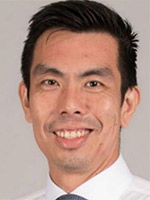 Surgery First Orthodontic Management
Chai Kiat Chng
Professional Experience and Education
| 2018-Present |
Chief Dental Officer, Singapore |
| 2018-Present |
Registrar, Singapore Dental Council |
| 2018-Present |
Head and Senior Consultant, Cleft and Craniofacial Dentistry Unit, KK Women's & Children's Hospital, Singapore |
| 2019-Present |
Adjunct Associate Professor, Faculty Of Dentistry, National University of Singapore |
| 2010-2017 |
Executive Secretary, Singapore Dental Council |
| 2011-2013 |
President, Association of Orthodontists, Singapore |
| 2004-2007 |
MDS Orthodontics, National University of Singapore |
| 1996-2000 |
BDS, National University of Singapore |
Honours and Awards
| 2012 |
Singapore Health Quality Service Award |
Research Interests
Biomaterials.
Cleft and Craniofacial genomics.
3-D Imaging.
Professionalism and Ethics.
Abstract
As surgery first becomes more popular, the boundaries of the surgeon and the orthodontist becomes more intricately inter-twined when it comes to planning of such cases. It is therefore important that fundamental principles of both orthodontic and surgical aspects are understood by both for the successful planning of such cases. The paradigms of ortho-orthognathic management will be discussed and strategies to ensure successful and predictable outcomes in Surgery First.
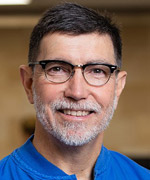 Veracity in an Era of Rampant Industry Disruption: What is the Role of the ASO?
Mike Razza
Professional Experience and Education
Employment:
| 2009-present |
Associate Professor - Faculty of Medicine and Dentistry University of Western Australia |
| 2002-2006 |
Senior Lecturer - Faculty of Medicine and Dentistry University of Western Australia |
| 1993-present |
Private Specialist practice Orthodontics. The Orthodontists Booragoon, Subiaco and Broome |
| 1991-2004 |
Lecturer - Faculty of Medicine and Dentistry University of Western Australia |
| 1990-1991 |
Clinical Research Associate University of Western Australia Dental School |
| 1987-1990 |
Graduate Orthodontic Resident, UMKC School of Dentistry, Dept of Orthodontics, Kansas City, Missouri, USA |
| 1986-1987 |
Dental Health Programs, Inc. Dallas, Texas |
Professional Associations and Memberships
American Association of Orthodontists
World Federation of Orthodontists
Asian Pacific Orthodontic Association
Australian Dental Association
Delta Sigma Delta
International College of Dentists - Australasian Section
Pierre Fauchard Academy
Australian Society of Orthodontists, Inc.
| 2016-present |
ASO Chairman Education Committee |
| 2012-2014 |
ASOWA Branch President |
| 2010-2018 |
ASO Representative to the APOS |
| 2010-2016 |
ASOWA Branch Council |
| 2010-2012 |
ASO Federal President |
| 2008-2010 |
ASO Federal Chairman Australasian Orthodontic Board and ASO Federal Vice-President |
| 2006-2008 |
ASO Federal Chairman Orthodontic Services Committee |
| 2002-2012 |
ASO Federal Council |
| 1996-2002 |
AOC Scientific Chairmen - 18th AOC March 2002 |
Education
Bachelor of Science - Sam Houston State University 1982
Doctor of Dental Surgery - Baylor College of Dentistry 1986
Certificate Orthodontics - University of Missouri at Kansas City 1990
Distinctions and Honours
2014 Distinguished Service Award - ASO, Inc.
2017 Honorary Life Membership - ASO, Inc.
Australian Orthodontic Board - Certified Board Member
Abstract
The profession of orthodontics is constantly under siege from differing forms of Industry Threats, Challenges and Disrupters. It is imperative that orthodontic professionals and professional societies or associations provide clear, honest, evidence-based information regarding orthodontic treatment to the public. In my opinion, it is a responsibility of professional associations or societies to mount public education campaigns to counter the Industry Threats, Challenges and Disrupters to the professional provision of orthodontic care. The Australian Society of Orthodontists (ASO)Public Education Campaign is at the forefront of public education on the benefits of seeking treatment from a highly educated orthodontist and providing the public with warnings regarding unconventional treatments and treatment delivery systems. This presentation will explore some of the Industry Threats, Challenges and Disrupters and display elements of the ASO's campaign to educate the public of the benefits of seeking an orthodontist's opinion and the risks of unconventional orthodontic delivery systems.
|
Allied Health Professional Program: Clinical Practice and Support Staff
(3): Marketing and Practice Management
Clinical Practice and Support Staff (3): Marketing and Practice Management
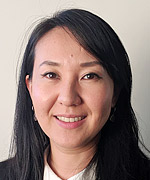 Challenges of being a Dental Hygienist in a foreign land
Yuko Shimizu
Professional experience and education
| 2009- 2019 |
The Orthodontist, Perth WA, Australia |
| 2007-2008 |
Associate Degree in Dental Hygiene, Graduated Curtin University of Technology, Perth WA, Australia |
| 2002 |
Post graduate dental hygienist workshop, University of Gothernburg, Sweden |
| 1998-2002 |
Ohgushi dental clinic, Tokyo Japan |
| 1996-1998 |
Graduated Tokyo Dental Association Dental Hygienist College, Tokyo Japan |
Yuko Shimizu
Dental Hygienist, Perth, Western Australia
Yuko Shimizu currently works as a dental hygienist at The Orthodontist, Perth's leading orthodontic clinic. After graduating from Tokyo Dental Association Dental Hygienist College in her homeland, Japan, in 1998, Yuko's passion for travel brought her to multicultural Australia, where she fell in love with the laid-back lifestyle. In order to live and work in Australia, Yuko undertook extensive English language studies before gaining her Associate Degree in Dental Hygiene from Curtin University of Technology in 2008. In addition to her duties in the practice's two Perth metropolitan clinics, Yuko is also part of a travelling team providing orthodontic treatment to patients in remote communities. Her daily interaction with patients from various cultural backgrounds has added a new dimension to Yuko's technical skills as a dental hygienist, making her a value member of the orthodontic services team at her practice. Yuko is a member of the Dental Hygienists Association of Australia.
Abstract
While technical skills as a dental hygienist can be transferred across borders, as a Japanese trained dental hygienist, the cultural exposure of working in Australia has been the biggest challenge, but also the most rewarding aspect of my career to date.
Less than 2% of Japan's population is non-Japanese, so the patient profile is very similar across the country. In Australia however, almost a third of the population are born overseas, every day brings new opportunities to learn more about the people we treat, and how to cater to their needs to ensure that they receive the very best of care.
Working in this environment has taught me to appreciate ethic and cultural diversity, how to communicate with individual patients accordingly, and how to respect the cultural sensitivities of my patients and colleagues in the clinic.
Through sharing my experiences, this presentation will discuss how cultural exposure and understanding can improve technical performance as a dental hygienist - something that simply can't be taught in a structured learning environment.
Clinical Practice and Support Staff (3): Marketing and Practice Management
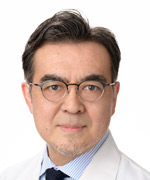 Periodontal consideration -Don't start Orthodontic treatment without the charting !-
Hajime Kamiyasu
| 1986 |
DDS, Nippon Dental University |
| 1991 |
DDSc, Nippon Dental University Graduate school in Orthodontics |
| 1995-1997 |
The University of Michigan Graduate periodontal clinic |
| 1998- |
Kamiyasu Orthodontic Office |
| 2008 |
MOrth, Membership in Orthodontics of Edinburgh |
| 2018 |
Board of the Japanese Orthodontic Society |
Abstract
Recently, many adult patients who are seeking orthodontic treatment visit orthodontic offices. Although there is regional difference, it is said that percentage of adult patients is about 20~30%.
Different from child or teenage patients, providers in orthodontic offices need another consideration for adult patients. The government survey in 2011 found the prevalence of moderate to severe periodontitis in 25~54 years of age were 18~34% in Japan.
Periodontal disease is called as silent disease, so it is difficult to be aware of involved this disease for patients. And for us, it is hard to evaluate condition of gingival tissue with just visual examination.
Oral cavity harbors more than 700 kinds of resident microbial species, they are usually as good bacterium and keep balance between periodontal tissue and microbiota. However, periodontal disease occurs due to break down of this equilibrium.
After placement of orthodontic appliances, plaque accumulation by inadequate oral hygiene enhances gingival inflammation such as reddish and bleeding. This kind of situation results in increasing periodontal pathogenic anaerobic microbial species in the subgingival site.
As above, we need to recognize patient´s history of periodontal treatment and know state of periodontal tissue before or during orthodontic treatment.
Main points are following,
Equilibrium between periodontal tissue and microbial species
Subgingival microbiota after placement of orthodontic appliances
Necessity of monitoring of periodontal tissue during orthodontic treatment
In order not to develop to periodontitis from gingivitis
|
|
|
Orthognathic Surgery
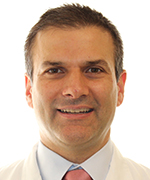 Adjuncts in orthognathic surgery to enhance facial esthetics
Flavio Uribe
Professional Experience and Education
| 2018-2019 |
Interim Chair, Division of Orthodontics, University of Connecticut Health |
| 2009-2019 |
Associate Professor, Division of Orthodontics, University of Connecticut Health |
| 2005-2019 |
Residency Program Director, Division of Orthodontics, University of Connecticut Health |
| 2004-2012 |
Clinic Director, Division of Orthodontics, University of Connecticut Health |
| 2002-2009 |
Assistant Professor, Division of Orthodontics, University of Connecticut Health |
| 1999-2002 |
Master's and Residency Certificate, Dental Science, Orthodontics, University of Connecticut Health |
| 1997-1999 |
Certificate (Fellowship), Advanced Education in General Dentistry, University of Connecticut Health |
| 1996-1997 |
Residency Certificate Advanced Education in General Dentistry, University of Connecticut Health, |
| 1989-1993 |
D.D.S., Dental Science, Instituto de Ciencias de la Salud (Medellin, Colombia) |
Honors and Awards
Diplomate of the American Board of Orthodontics, 2005 and 2019
Inducted to the Angle Society of Orthodontists
Faculty Award, 2007
Office of Diversity, University of Connecticut Health
Induction, Phi Chi Chapter of Omicron Kappa, 2009
Upsilon Honor Dental Society
Professorship, 2012
Charles Burstone Professor
University of Connecticut Health
Second Place, Charley Shultz Competition
American Association of Orthodontists Annual Meeting, Basic Science
Granted to the best research posters among the US and Canada Graduate Orthodontic Programs (Dr. Christopher Murphy). "Effect of corticision and different force magnitudes on orthodontic tooth movement in a rat model."
Award of Excellence in Research
Japanese Orthodontic Society
Awarded to orthodontic fellow Dr. Jun Nihara for poster "Finite element analysis of mandibular molar protraction with sliding mechanics and orthodontic anchor screw."
Biomedical Research Award
American Association of Orthodontists 2012 and 2019
Research Interests
Orthognathic surgery, biology of tooth movement, biomechanics, TADs
Abstract
Orthognathic surgery has been used as an approach to correct significant dentofacial deformities. Orthognathic surgery primarily addresses jaw discrepancies in the 3 planes of space improving the facial esthetics and occlusion. However, in some instances the surgery may negatively affect some facial elements such as the nose or in some instances may not obtain the optimal facial esthetics such as addressing malar deficiency. Complementing the bimaxillary movements with esthetic adjuncts maximizes the facial esthetics results from orthognathic surgery.
This lecture will highlight the combination of orthognathic surgery with adjunct surgical procedures such as mandibular angle, malar, and chin implants, microfat grafting and lipectomies. Rhinoplasties a few months after the surgical procedure will be discussed as an option to refine the surgical outcomes. The virtual planning, sequence of procedures and execution of the surgery will be presented.
Orthognathic Surgery
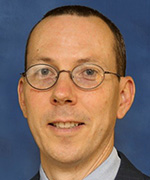 21st Century Orthognathic Surgery: Using Historical Principles to Advance the Boundary
R. Scott Conley
Professional Experience and Education
| 2016-2019 |
University at Buffalo Department of Orthodontics LB Badgero Endowed Associate Professor & Chair |
| 2012-2016 |
University of Michigan School of Dentistry Dept. of Orthodontics and Pediatric Dentistry Robert W. Browne Endowed Prof and Clinical Associate Professor |
| 2008-2011 |
University of Michigan School of Dentistry Dept. of Orthodontics and Pediatric Dentistry Clinical Associate Professor |
| 2006-2008 |
University of Michigan School of Dentistry Dept. of Orthodontics and Pediatric Dentistry Clinical Assistant Professor |
| 2001-2006 |
Vanderbilt University Medical Center Dept. of Oral Surgery
Division of Orthodontics Assistant Professor |
| 1999-2001 |
Vanderbilt University Medical Center Dept. of Oral Surgery
Division of Orthodontics Instructor |
| 1996-1999 |
Vanderbilt University Medical Center Orthodontic Certificate |
| 1992-1996 |
University of Pennsylvania School of Dental Medicine
Doctor of Dental Medicine DMD |
| 1988-1992 |
Hamilton College Bachelor of Arts Chemistry |
Honors and Awards
| 2016-2017 |
Chair AAO Council on Education |
| 2016-2019 |
Chair AAO Annual Session Advisory Committee |
| 2016-2019 |
LB Badgero Endowed Associate Professor |
| 2016-2017 |
AAO Society of Orthodontic Educators-Immediate Past President |
| 2015-2016 |
AAO Society of Orthodontic Educators-President |
| 2014-2015 |
AAO Society of Orthodontic Educators-President Elect |
| 2011-2016 |
Robert W. Browne Endowed Professor of Dentistry |
| 2007 |
E. H. Angle Association 2007 Research Award |
| 2007 |
AJO-DO CDABO Case Report of the Year |
| 2005 |
E. H. Angle Association 2005 Research Award |
Research Interests
Orthognathic Surgery
Obsructive Sleep Apnea
3D Cone beam computed tomography CBCT
Abstract
This lecture will present historical principles from both oral surgery and orthodontic treatment planning. The presentation will focus on enhanced diagnostic and virtual treatment planning protocols, as well as unique and customized treatment strategies. These advances combine the best facets of both the surgical and orthodontic disciplines to optimize treatment efficiency and outcomes. Principles of how to avoid complications, proper management of complications when they do occur, and application of new technologies to assist in resolving complications will also be presented. When orthodontists and surgeons work collaboratively and think outside the box, patients with severe skeletal dysplasia receive the best treatment currently available and push the boundaries to advance both specialties.
LEARNING OBJECTIVES
Compare and contrast two dimensional 2D and three dimensional 3D surgical orthodontic treatment planning.
Describe a broad spectrum of surgical interventions.
Describe orthodontic mechanics and TADs to enhance the pre-surgical preparation.
COURSE BENEFITS
Understand the benefits of computer aided surgical simulation CASS to both the provider and the patient.
Understand how to adjust the time of surgical intervention to the individual case needs.
Understand the evidence for surgical orthodontic treatment decisions.
Orthognathic Surgery
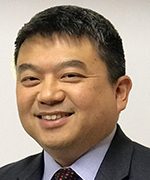 3D planning in Orthodontics and Orthognathic Surgery
Chung How Kau
Dr Kau is Chairman and Professor in Orthodontics at the University of Alabama Birmingham.
Abstract
This lecture will discuss the use of 3D planning in Orthodontics and Orthognathic Surgery. New technology allows for better efficiency and effectiveness for our patients. Communication with the surgeon is enhanced and the agreement of the surgical plan is more predictable. Advantages and Disadvantages will also be discussed.
|
Oral Physiology and Treatment
Oral Physiology and Treatment
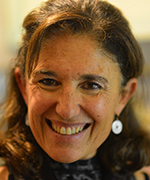 Occlusal vulnerability: hypervigilance, neuroplasticity and adaptation
Ambra Michelotti
Professional Experience and Education 2018 professor department of orthodontics university of Naples Federico 2001 2018 associate professor university of Naples Federico 1989 2000 assistant professor university of Naples Federico 1984 1988 fellowship university of Naples Federico 2012 2019 director orthodontics post graduated program 2003 2019 director master program in TMD and orofacial pain 2018 honorary degree university of Malmo Sweden 1984 degree in dentistry 1980 degree in biological sciences Honors and Awards principal investigator in national projects from 2018 editor in chief orthodontics and craniofacial research from 2007 associate editor european journal of oral sciences from 2008 associate editor journal of oral rehabilitation from 2010 editorial board european journal of orthodontics Research Interests ortodontics TMD orofacial pain
Abstract
Occlusion has been considered for years as one of the major aetiological factor causing Temporomandibular Disorders (TMD). Nevertheless, at now the associations reported are few, weak and not consistent across the studies. Hence at today, the role of occlusion in the aetiology of TMD has not been clearly addressed and therefore it should not be overstated. Actually, occlusion represents a highly complex specialized system of integration of neurological signalling originating from periodontal, dental, and soft tissue mechanoreceptors. This complex framework of information is continuously elaborated by the central nervous system, in order to adjust and refine jaw position and movements, according to peripheral inputs. Therefore, the board concept of occlusion does not involve only the peripheral input (the tooth to tooth contact), but also the way the same stimulus is interpreted by the brain of each individual. Hence, the central nervous system changes (sensorimotor neuroplasticity) are the major factors to determine how well an individual adapts to the occlusal and oral alteration that can result from any dental treatment.
Therefore, it seems crucial to correctly understand the connection between occlusion and TMD, but the paradigm shift requires moving to a more comprehensive interpretation of the occlusion and of the maxilla mandibular relationship. As no proven causal relationship exists, the role of malocclusion in the aetiology of craniomandibular disorders should be considered very limited. Instead, patients occlusal awareness and concerns have to be seriously accounted by clinicians during general and dental examination as specific group patients might develop iatrogenic maladaptive behaviours.
Oral Physiology and Treatment
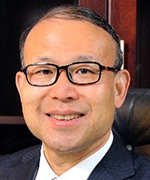 Importance of occlusion and physiological significance of sleep bruxism
Shouichi Miyawaki
Professional Experience and Education
| 2017-present |
Vice President, Kyushu Orthodontic Society |
| 2016-present |
Dean, Faculty of Dentistry, Kagoshima University |
| 2016-present |
Councilor, Japanese Society for Jaw Deformities |
| 2011-2016 |
Vice-Dean, Graduate School of Medical and Dental Sciences, Kagoshima University |
| 2014-2016, 2009-2011 |
|
Assistant Director, Kagoshima University Medical and Dental Hospital |
| 2014-present |
Editor in Chief, Orthodontic Waves (Official Journal of Japanese Orthodontic Society) |
| 2014-present Director |
|
Japanese Orthodontic Society |
| 2009-present |
Director, Japanese Cleft Palate Association |
| 2006-present |
Director, Japanese Society of Stomatognathic Function |
| 2005-present |
Professor and Chair, Department of Orthodontics & Dentofacial Orthopedics, Kagoshima University Graduate School of Medical and Dental Sciences |
| 2005-2017 |
Academic Director, Kyushu Orthodontic Society |
| 2005 |
Associate Professor, Okayama University |
| 2001-2002 |
Visiting Research fellow, Montreal University |
| 1999-2005 |
Lecturer, Okayama University |
| 1999-present |
Part time Lecturer, Nara Medical University |
| 1997-1999 |
Assistant Professor, Nara Medical University |
| 1994-1997 |
Postdoctoral Fellow, Osaka University |
| 1994 |
Ph.D., Osaka University Graduate School of Dentistry |
| 1989-1990 |
Resident, Osaka University Faculty of Dentistry |
| 1989 |
DDS, Osaka University Faculty of Dentistry |
Honors and Awards
| 2019, 2015-12, 2009, 2006, 2003 |
|
|
Outstanding presentation award, Japanese Orthodontic Society |
| 1994 |
IADR Unilever Travel Award |
| 1989 |
Yumikura Award, Osaka University |
Research Interests
Relationship between sleep bruxism and gastroesophageal reflex (GER) :
Influence of a Proton Pump Inhibitor (PPI) on Sleep Bruxism
Influence of experimental esophageal acidification on Sleep Bruxism
Temporary Anchorage Device :
Evaluation of miniscrew stability
Development of an automatic embedding auxiliary skeletal anchorage device
Orthognathic function :
Jaw movement in patients with malocclusion
EMG in patients with malocclusion
Cleft Lip and Palate
Abstract
It is known that the risks of systemic disease increase by losing teeth, possibly due to periodontitis which closely relates with malocclusion and bruxism. Past studies have suggested that occlusion influences general health. Particularly, it was reported that patients with skeletal Class III had more gastroesophageal reflux disease (GERD) symptoms than normal subjects, possibly due to low salivation. Regarding sleep bruxism, several negative influences on the dentofacial region are known, including tooth wear, TMDs such as myofascial pain, hypertrophy of the masseter muscle, and grinding sounds leading to sleep disturbance of family members. At present, there is no causative treatment although teeth can be protected from bruxism by wearing a splint. A previous study in 2003 found that swallowing was related with sleep bruxism, which inspired the hypothesis that gastroesophageal reflux (GER) may cause sleep bruxism. Surprisingly, the associated factors of sleep bruxism and the associated factors of GER are nearly matched. After examining the relationship between sleep bruxism and GER, it was found that intra-esophageal acid stimulation, which was a model of gastroesophageal reflux (GER), caused more numbers of swallowing and bruxism episodes. In addition, the other previous studies revealed that esophageal acidification causes sleep bruxism in normal subjects, and that the administration of a PPI (gastric acid secretion inhibitor) reduced the frequencies of bruxism episodes. Recent meta-analysis revealed that GERD is the most associated risk factor of sleep bruxism in adults. This suggests that GER-caused bruxism may be a physiological response to protect the esophagus.
Oral Physiology and Treatment
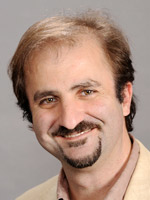 Bruxism: an Orthodontist's Perspective
Mauro Farella
Professional Experience and Education
| 2009 - present |
Professor and Chair of Orthodontics, University of Otago, Dunedin, New Zealand. |
| 2017 - present |
Deputy Director, Sir John Walsh Research Institute, Faculty of Dentistry, University of Otago. |
| 2013 - 2017 |
Associate Dean Postgraduate Studies, Faculty of Dentistry, University of Otago |
| 2007 - 2009 |
Senior Lecturer, Clinic for Masticatory Disorders, Center for Dental and Oral Medicine and Maxillofacial Surgery, University of Zurich (CH). |
| 2002 - 2007 |
Senior Lecturer, Department of Orthodontics, University of Naples "Federico II", Italy. |
| 2009 - |
Venia Legendi (PD), University of Zurich, Switzerland. |
| 2007 - |
Specialization in Statistics in Medicine, University of Milan, Italy. |
| 2002 - |
Specialization in Orthodontics, University of Naples Federico II, Italy. |
| 1998 - |
PhD in Oral Sciences, University of Reggio Calabria, Italy. |
| 1993 - |
DDS in Dental Surgery, University of Naples Federico II, Italy. |
Honors and Awards
| 2009 - |
Certified Membership of the European Board of Orthodontists (Helsinki, Finland) |
| 2015 - |
Alan Docking Science Award for outstanding scientific achievement in the field of dental research by the Australia New Zealand Division of the International Association for Dental Research. |
| 2015 - |
Sir John Walsh Research Award for excellence in oral health research |
Research Interests
Clinical Orthodontics, TMJ/Oral Physiology, Translational Research
Abstract
Bruxism is a repetitive jaw-muscle activity with two distinct manifestations, awake bruxism and sleep bruxism. Awake bruxism, i.e. the habit to clench the teeth during daytime, could simply be a learned habit that increases in frequency and duration under certain conditions, such as stress and anxiety. Sleep bruxism is a 'sleep-related' motor activity that is commonly observed also in non-bruxers. This activity increases in frequency in the presence of some triggers, such as stressors, anxiety, smoking, caffeine intake, heavy alcohol drinking and medications.
The diagnosis of bruxism is challenging and self-reports of bruxism patients obtained during interviews may be invalid. Tooth wear is not a proof of ongoing SB bruxism because of the natural variability of bruxism and wear could have occurred in the past. It is also incorrect to related the severity of tooth wear to the severity of bruxism activity.
As the vast majority of bruxing episodes last only a few seconds, the total sleep bruxing time per night amount to a few minutes. This raises the question whether this intermittent and short-lasting muscle activity is sufficient to be so deleterious as normally thought by dentists.
Patients with awake bruxism or sleep bruxism may present to orthodontists posing some challenges for the treatment. What does an orthodontist need to know about bruxism, and what are the implications of bruxism for the management of orthodontic patients? This lecture will summarise our current understand of bruxism, from an orthodontist's perspective.
|
Rising Stars
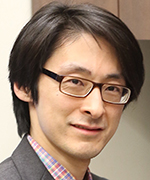 An orthodontist tale of cellular plasticity and stem cell activation in skeletal development and regeneration
Noriaki Ono
Professional Experience and Education
| 2014 - 2020 |
Assistant Professor, Department of Orthodontics & Pediatric Dentistry, University of Michigan School of Dentistry, Ann Arbor, MI, USA |
| 2012 - 2014 |
Instructor, Endocrine Unit, Massachusetts General Hospital and Harvard Medical School, Boston, MA, USA |
| 2009 - 2012 |
Research Fellow, Endocrine Unit, Massachusetts General Hospital and Harvard Medical School, Boston, MA, USA |
| 2007 - 2009 |
Clinical Fellow in Orthodontics, Tokyo Medical and Dental University, Tokyo, Japan |
| 2007 |
PhD, Tokyo Medical and Dental University, Tokyo, Japan |
| 2003 |
DDS, Tokyo Medical and Dental University, Tokyo, Japan |
Honors and Awards
| 2017 |
Most Outstanding Basic Abstract Award, American Society for Bone and Mineral Research |
| 2012 |
Young Investigator Award, American Society for Bone and Mineral Research |
| 2011 |
Gideon and Sevgi Rodan Fellowship Award, International Bone and Mineral Research |
| 2003 |
Nagao Academic Award (for summa cum laude), Tokyo Medical and Dental University |
| 2003 |
Kobayashi Ikueikai Award (for excellence in clinic), Tokyo Medical and Dental University |
Research Interests
Skeletal stem cells and bone regeneration
Mechanism of bone development
Growth plate and cartilage biology
Abstract
Orthodontists can do amazing things for bones and teeth, but what is actually going on? I have been asking the fundamental question about special bone cells called skeletal stem cells, and what these cells do for us over the last decade. Skeletal stem cells are the cells that can produce a variety of bone cells with important functions in bone health and diseases. Our recent findings are beginning to unravel their unique properties: these stem cells are diverse, malleable and local in nature. For example, we have identified skeletal stem cells in the resting zone of the growth plate cartilage - these stem cells look exactly like chondrocytes that usually make cartilages, but acquire special features of life-long self-renewal. The question is how a small number of skeletal stem cells are maintained in adulthood: our more recent findings point to the possibility that some types of functionally dedicated mature bone cells, such as those residing in bone marrow space termed bone marrow stromal cells, can revert into stem cells under special conditions. In this lecture, I will present the current concept on skeletal stem cells, and how they can help our daily and future orthodontic practice.
Rising Stars
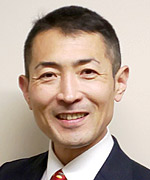 Identification of gene mutations in oligodontia patients and in vivo functional analysis of genes using genome editing technology
Akihiro Yasue
Professional Experience and Education
| 2014-Present |
Senior Lecturer, Department of Orthodontics, Tokushima University, Japan |
| 2009-2014 |
Research Associate, Department of Orthodontics, Tokushima University, Japan |
| 2008-2009 |
Fellow, Baylor College of Dentistry, Texas, U.S.A |
| 2005-2008 |
Fellow, University of Texas Health Science Center at Houston Dental Branch, Texas, U.S.A |
| 2004-2005 |
Research Associate, Department of Orthodontics, Tokushima University, Japan |
| 2003-2004 |
Postdoc, Department of Orthodontics, Tokushima University, Japan |
| 2002-2003 |
Resident, Tokushima University, Japan |
| 1998-2002 |
PhD, Tokushima University Graduate School of Dentistry, Japan |
Honors and Awards
| 2004 |
Award for Encouragement of Research, JADR |
| 2010 |
Award for Encouragement of Research, JADR |
| 2012 |
Award for Encouragement of Research, Japanese Cleft Palate Association |
| 2001 |
Bernard G. Sarnat Award, Craniofacial Biology Group, IADR |
Research Interests
Tooth Development, Oligodontia, Genome editing technology
Abstract
Non-syndromic tooth agenesis or isolated hypodontia is the most common human malformation. The prevalence of the condition ranges from 1.6% to 9.6% in different populations. Non-syndromic tooth agenesis has been reported to be associated with heterozygous mutations in MSX1, PAX9, WNT10A and WNT10B. MSX1 and PAX9 are the most reported genes associated with agenesis of the premolars and/or molars. Oligodontia patients with PAX9 mutation exhibit clear phenotype with agenesis in molar region, on the other hand, the patients with mutations in MSX1 gene show various phenotypes including agenesis of the premolars.
Previous functional analyses for detected mutations have been examined with cell culture system because of the methodological limitation. It means that the causality of the reported mutations detected in small pedigrees or unclear phenotypes is not always reliable. Recently, more than half of patients with hypodontia were reported to have WNT10A mutation without any functional analysis of the gene, however, the causality is statistically questionable. For such a reason, the genotype/phenotype correlation is occasionally in a state of chaos.
The presentation will show the mutation detection of the genes for the patient with oligodontia using next-generation sequencing technology-based targeted panel sequencing analysis which improves the molecular diagnosis in target genes. The presentation will also make clear the causality of pathogenic SNVs using genome editing technology in mice. This strategy showing tooth phenotype can be a useful method to verify genotype/phenotype correlation of human disorders. For Msx1 gene, in vivo functional analysis for each conserved domain will also be presented.
|
| All sessions in this time slot will be released at 4 pm JST. |
International Boards Symposium
International Boards Symposium
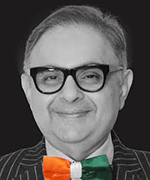 - Nikhilesh R. Vaid
Prof Nikhilesh R. Vaid is currently the PRESIDENT -ELECT of the World Federation of Orthodontists. He is a Past President of the Asian Pacific Orthodontic Society & the Indian Orthodontic Society. Prof Vaid is Editor in Chief of APOS Trends in Orthodontics -the Journal of the Asian Pacific Orthodontic Society and three issues of Seminars in Orthodontics, including one on "Digital Technologies in Orthodontics"
He has a practice in Mumbai, India and Dubai ,UAE. He is the VICE DEAN and Professor of Orthodontics at the European University, Dubai Health Care City, DUBAI,UAE.
[Part 1] WFO Initiates for Orthodontic Boards: A 10 Year Perspective
 WFO Orthodontic Boards Committee, a ten year perspective
Roberto Justus
PROFESSIONAL EXPERIENCE AND EDUCATION
| 2014 to 2019 |
Adjunct Professor, AT Still Univ., Graduate Dept. of Orthodontics, Phoenix, AZ, USA |
| 2010 to 2015 |
WFO President |
| 2007 to 2010 |
Chair, WFO Orthodontic Boards Committee |
| 2005 |
Examiner, Italian Board of Orthodontics |
| 2003 to 2004 |
President, ABO College of Diplomates |
| 2002 to 2019 |
Examiner, ABO |
| 1996 to 2019 |
AJODO (reviewer) |
| 1995 to 1998 |
President Latin American Assoc. of Orthodontists |
| 1994 to 2019 |
Editorial Board Member: "Seminars in Orthodontics" and "Revista Clinica de Ortodontia" (Dental Press, Brazil) |
| 1990 |
Diplomate ABO |
| 1988 to 2019 |
Research Director, Graduate Dept. of Orthodontics, Intercontinental Univ., MEXICO |
| 1970 to 2019 |
Professor orthodontics, School of Dentistry, Technological Univ. of Mexico, MEXICO |
| 1969 to 1970 |
Professor graduate orthodontics, Dept. of Orthodontics, UNAM, MEXICO |
| 1968 |
MSD, Dept. of Orthodontics, Univ. of Wash., Seattle, USA |
AWARDS
| 2018 |
"Honorary Member Award", British Orthodontic Society |
| 2013 |
"Louise Ada Jarabak Award", American Assoc. of Orthodontists Foundation |
| 2011 |
"Dale B. Wade Award", ABO |
| 2007 |
"Dentistry Distinguished Professor Award", Universidad Tecnologica de Mexico |
| 2002 |
"National Orthodontic Excellence Award", Mexican Association of Orthodontists |
| 1993 |
"Best Lecturer 1993 Meeting Award", Latin American Association of Orthodontists, Lima, Peru |
| 1966 |
"Best Dental Student in Mexico Award", Diario de Mexico newspaper |
HONORS
| 2018 |
WFO Executive Committee honored me for "Promoting the establishment of Orthodontic Certifying Boards around the world" |
| 2015 |
Springer Publishing Co. honored me for authoring the orthodontic textbook: "Iatrogenic Effects of Orthodontic Treatment, Decision Making in Prevention, Diagnosis, and Treatment" |
| 2012 |
Univ. of Wash honored me as "2012 Kokich Shapiro Visiting Scholar" |
| 2010 |
Seminars in Orthodontics honored me as "Guest Editor" March 2010 issue |
| 2010 |
Mexican Association of Orthodontists honored me naming its 2010 meeting as the "Roberto Justus 43rd Annual Meeting" |
| 2006 |
Intercontinental Univ., Graduate Dept of Orthodontics, honored me for "Excellence as Professor and Research Director" |
RESEARCH INTERESTS
Clinical orthodontics
[Part 2] American Board of Orthodontics
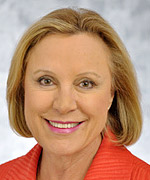 -
The American Board of Orthodontics: A Historical Perspective
Dr. Valmy Kulbersh
Education
| 1973 |
Doctor in Dental Surgery (DDS)
National University of Asuncion, Dental School. Asuncion, Paraguay |
| 1977 |
Orthodontic Certificate and M.S
University of Detroit Dental School. Detroit, MI |
Professional Experience - Academic Appointments
| 1977-1984 |
Assistant Professor, Department of Orthodontics, University of Detroit, School of Dentistry, Detroit, MI |
| 1977-2004 |
Clinic Coordinator, Graduate Orthodontic Program, University of Detroit Mercy, School of Dentistry, Detroit, MI |
| 1984-1999 |
Associate Professor, Department of Orthodontics, University of Detroit Mercy, School of Dentistry, Detroit, MI |
| 1999-2001 |
Full Professor, Department of Orthodontics, University of Detroit Mercy, School of Dentistry, Detroit, MI |
| 2002-present |
Adjunct Professor, Department of Orthodontics, University of Detroit Mercy, School of Dentistry, Detroit, MI |
Professional Experience – Non academic:
| 1977-present |
Intramural Practice - University of Detroit Mercy, School of Dentistry |
| 1980-present |
Private practice - Sterling Heights, MI |
| 2013-present |
Great lakes Association of Orthodontics - Director and President of the American Board of Orthodontics |
Hospital Appointments:
| 1994-2016 |
Staff, DMC Hospital - Oral Surgery Dept., Cleft Lip & Palate Clinic |
Honors and Awards:
| 1974 |
Best Student Award, National University of Asuncion, Paraguay. School of Dentistry |
| 1975 |
Student Award, Full Academic Scholarship. International Rotary Club International Foundation |
| 1983 |
G.L.A.O. Academic Institution Award, Table Clinic Presentation, Ottawa, Canada |
| 1988 |
ABO Case Display at Annual Meeting of the American Association of Orthodontics, Anaheim, CA |
| 1990 |
Omicron Kappa Upsilon Honorary Dental Society |
| 1991 |
Fellow of the American College of Dentists |
| 1993 |
Fellow of the Pierre Fauchard Academy |
| 2000 |
Elected to the Angle Society of Orthodontists, Midwest Component |
| 2006 |
Fellow of the International College of Dentists |
| 2011 |
G.L.A.O Distinguished Service Award |
Research interests
Early treatment
Orthognathic surgery
Airway considerations
[Part 2] American Board of Orthodontics
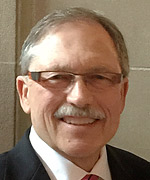 -
Past and Present ABO Certification: Structure and Process
David Sabott
Professional Experience and Education
| 1977-present |
Private Practice, Orthodontics and Dentofacial Orthopedics, Erie, CO. USA |
| 2014-2020 |
Director, American Board of Orthodontics, St. Louis, MO. USA. |
| 2018-2021 |
Invited lecturer, University of Colorado, Denver, CO. USA. |
| 2018-2019 |
Invited lecturer, Roseman University, Henderson, NV. USA. |
| 2018-2020 |
Invited lecturer, A.T. Still University, Mesa, AZ. USA. |
| 1977-1980 |
Clinical Instructor, Department of Developmental Dentistry, University of Colorado School of Dentistry, Denver, CO. USA. |
| 1977 |
Certificate in Orthodontics, Northwestern University, Chicago, IL. USA |
| 1976-1977 |
Clinical Instructor, Pediatric Dentistry, Northwestern University, Chicago, IL, USA |
| 1973-1975 |
Pediatric Dental Resident, Children’s Memorial Hospital / Northwestern University, Chicago, IL. USA. |
| 1975 |
Master of Science (M.S. degree), Biological Materials, Northwestern University, Chicago, IL. USA. |
| 1971-1973 |
Dental Extern, Children’s Hospital, Methodist Hospital Health Care System, Omaha, NB. USA. |
| 1969-1973 |
Doctor of Dental Surgery, (D.D.S. degree), Creighton University Dental School, Omaha, NB. USA. |
| 1966-1969 |
Creighton University, Omaha, NB. USA. |
Honors and Awards
| 2009 |
Rocky Mountain Society of Orthodontics, Distinguished Service Award. |
| 2005 |
Rocky Mountain Society of Orthodontists, President. |
| 2002 |
Edward H. Angle Society, President of the Southwest Component. |
| 2000 |
Colorado State Orthodontic Society, President. |
| 1977 |
Omicron Kappa Upsilon - National Honorary Dental Fraternity |
| 1977 |
American Society of Dentistry for Children - Certificate of Merit |
Research Interests
Early (mixed dentition) treatment,
Facial esthetics
Sleep Apnea
[Part 3] Orthodontic Boards Around the World
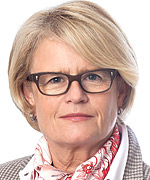 -
German Board of Orthodontics: How to become a Diplomate
Kahl-Nieke Barbel
Professional Experience and Education
| 2019 - 2020 |
President EOS, EOS Congress 10-14 June Hamburg |
| 2013 - 2016 |
President of the German Society of Dental, Oral and Cranio-mandibular Sciences (DGZMK) |
| 2008 - 2014 |
Vice-President of the European Federation of Orthodontics (FEO) |
| 2007 - 2009 |
Dean of Education, Medical Faculty, University of Hamburg |
| 2005 - 2009 |
President of the German Orthodontic Society |
| Since 2003 |
Vice-Chair of the German Board of Orthodontics and Orofacial
Orthopaedics |
| 2002 |
President of the Annual Meeting of the German Orthodontic Society in Hamburg |
| Since 2002 |
Head of the Center for Dental and Oral Medicine, University Medical Center Hamburg-Eppendorf |
| Since 1998 |
Chair and Head of the Dept. of Orthodontics, University of Hamburg |
| 1994 |
Habilitation (Ph. D. degree), Thesis “Long-term clinical evaluation of orthodontic treatment” |
| 1992 |
Research fellow and guest-lecturer at the Dept. of Orthodontics, School of Dental Medicine, University of Connecticut, USA |
| 1986 - 1994 |
Associate Professor at the Dept. of Orthodontics, University of Cologne |
| 1982 - 1986 |
Postgraduate Student at the Dept. of Orthodontics, University of Co-logne |
| 1986 |
Doctorate (Dr. med. dent.),
Thesis “Update of the dentition table of I. Schour and M. Massler from 1941 with special consideration of premolars and wisdom teeth” |
| 1976 - 1981 |
Dental School at the Justus-Liebig-University Giesen |
Honors and Awards
| 2018 |
Teaching Award of the City of Hamburg |
| 2009 |
“Teacher of the Year” Award University Medical Center Hamburg-Eppendorf |
| 2007 |
Research Award “Arnold-Biber-Preis” donated by DENTAURUM for the project “Age-dependent three-dimensional microcomputed tomography analysis of the human midpalatal suture” by Korbmacher H and Kahl-Nieke B |
Research Interests
Specific scientific and clinical expertises:
- treatment timing
- early orthodontic treatment of Class III and other malocclusions
- orthodontic treatment of juvenile idiopathic arthritis, temporomandibular joint disorders and hemifacial microsomia
- orthodontic treatment of cleft-lip-and-palate patients as well as of adults with orthodon-tic / surgical treatment needs
Author and co-author of almost 100 original articles and author of chapters in textbooks, e.g. Kahl-Nieke B: Retention and stability considerations for adult patients. In Nanda R (ed): The Dental Clinics of North America, Adult Orthodontics I. Saunders Philadelphia, 1996, Vol. 40 (4), pp 961-994
Author of the textbook “Introduction to Orthodontics”, 1st and 2nd ed., Urban & Fischer, Munich, 2001, 3rd ed. Deutscher Ärzteverlag, Cologne, 2009
Also published in Polish in 2005
[Part 3] Orthodontic Boards Around the World
 Brazilian Board of Orthodontics: past, present, and future
Adilson Luiz Ramos
| 1994 - 2020 |
Associate Professor, State University of Maringa, Brazil |
| 2019 - 2020 |
Director of the Brazilian Board of Orthodontics |
| 2003 - 2006 |
Former Editor-in-chief of the Dental Press Journal of Orthodontics , the official publication of the Brazilian Association of Orthodontics |
| 1998 - 2001 |
PhD at State University of Sao Paulo UNESP, Araraquara, Brazil |
| 1992 - 1995 |
MS in Orthodontics at University of Sao Paulo USP, Bauru, Brazil |
| 1989 - 1992 |
Residence Program at Craniofacial Anomalies Rehabilitation Hospital HRAC, University of Sao Paulo USP, Bauru, Brazil |
| 1995 - 2020 |
Member of the Brazilian Association of Orthodontics |
| 1998 - 2020 |
Member of the World Federation of Orthodontics |
| 1996 - 2020 |
Member of the American Association of Orthodontics |
| 2019 - 2020 |
Guest Member of the Angle Society of Orthodontics, North Atlantic Component |
[Part 3] Orthodontic Boards Around the World
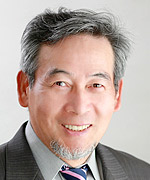 -
The System of Japanese Orthodontic Board
Ryuzo Kanomi, DDS, DDSc, PhD
Professional Experience and Education
| 2008- |
Adjunct Lecturer, Department of Orthodontics and Dentofacial Orthopedics of Osaka University Graduate School of Dentistry, Japan |
| 2008-2013 |
Adjunct Clinical Professor, Department of Orthodontics at Osaka University, Japan |
| 2002 |
PhD, Orthodontics, Osaka University, Japan |
| 1989 |
DDSc, Pedodontics, Osaka Dental University, Japan |
| 1980- |
Director, Kanomi Dental Office, Japan |
| 1977 |
DDS, Osaka Dental University, Japan |
Honors and Awards
Joseph E. Johnson Table Clinic Awards by A.A.O. (1994, 1997, 1998, 2000, 2001)
Research Interests
Early Treatment Orthodontics, Orthodontic Anchor Screw
[Part 3] Orthodontic Boards Around the World
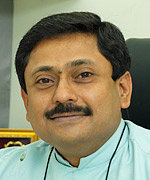 -
20 YEAR JOURNEY OF THE INDIAN BOARD OF ORTHODONTICS
Prof. Dr. SHAILESH V. DESHMUKH
M.D.S.; M.ORTH.R.C.S.(EDIN.UK); FDSRCSEd. (EDIN.UK)
DIPLOMATE INDIAN BOARD OF ORTHODONTICS
Teaching Experience of 27 years
Professor Bharati Vidyapeeth Deemed to be University Dental College & Hospital
Member Board of Studies Bharati Vidyapeeth Deemed to be University, Pune
Fellow of the Royal College of Surgeons Edinburgh, UK.
Membership in Orthodontics Royal College of Surgeons Edinburgh, UK.
Honors & Awards
President Indian Dental Association, Pune Branch, India, 2018-2019
President Indian Orthodontic Society, 2017-2018
Chairman Indian Board of Orthodontics, 2015-2016
Vice- Chairman Indian Board of Orthodontics, 2014-2015
Secretary & Treasurer Indian Board of Orthodontics, 2013-2014
Director Indian Board of Orthodontics, 2012-2013
Director Indian Board of Orthodontics, 2011-2012
PhD Guide
Postgraduate Guide & Facilitator
Fellow World Federation of Orthodontists
Member American Association of Orthodontists
Reviewer European Journal of Orthodontics
Reviewer APOS Journal
Reviewer Journal of the Indian Orthodontic Society
Research Interests
Miniscrews & the Transverse Dimension
Digital Orthodontics
3D Technology
Society of World Boards, The Road Ahead
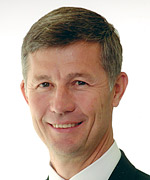 - Thomas Ahman
American Association of Orthodontists Speaker of the House
Chair, AAO Council on Membership, Ethics and Judicial Affairs
Past President, Great Lakes Association of Orthodontists
Private practice 32 years
|
APOS Trends Awards
 - Nikhilesh R. Vaid
Prof Nikhilesh R. Vaid is currently the PRESIDENT -ELECT of the World Federation of Orthodontists. He is a Past President of the Asian Pacific Orthodontic Society & the Indian Orthodontic Society. Prof Vaid is Editor in Chief of APOS Trends in Orthodontics -the Journal of the Asian Pacific Orthodontic Society and three issues of Seminars in Orthodontics, including one on "Digital Technologies in Orthodontics"
He has a practice in Mumbai, India and Dubai ,UAE. He is the VICE DEAN and Professor of Orthodontics at the European University, Dubai Health Care City, DUBAI,UAE.
APOS Trends Awardst
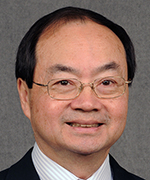 -
Peter Ngan
Dr. Peter Ngan is the Branson-Maddrell Endowed Professor and Chair in the Department of Orthodontics, West Virginia University School of Dentistry. Dr. Ngan is also an Honorary Professor in the Faculty of Dentistry at the University of Hong Kong and a Guest Professor at the Wuhan University School of Stomatology. Dr. Ngan holds a dental degree from Harvard University, School of Dental Medicine and Certificates in Orthodontics, Pediatric Dentistry and Hospital Dentistry from the University of Pennsylvania, School of Dental Medicine/ Children Hospital of Philadelphia. He is a member of the Angle East (Eastern Component of the Edward H. Angle Society). He is a Diplomate of the American Board of Orthodontics and a Diplomate of the American Board of Pediatric Dentistry. He was inducted as Fellow of the American College of Dentists (October, 2008), Fellow of the International College of Dentists (October 2010) and Fellow of the Pierre Fauchard Academy (May 2011). Dr. Ngan's research interest includes growth and development, biology of tooth movement, dentofacial orthopedics, orthodontic appliance therapy, oral implantology, orthodontic bonding systems and adult interdisciplinary treatment.
Abstract
Young patients with a Class III malocclusion and maxillary deficiency are treated primarily with facemasks. However, because the force is applied to the teeth, the inevitable mesial migration of the dentition can result in anterior crowding and the need for a subsequent extraction therapy. Furthermore, the desired skeletal effect of this commonly used approach often turns out to be less than expected. To increase the advancement of the maxilla, facemask therapy is often combined with rapid palatal expansion (RPE) since stimulation of the midface sutures is expected. Temporary Anchorage Devices (TADs) can be inserted in the palate to avoid mesial migration of the upper molars when using a facemask and to minimize tipping or periodontal damage to the bicuspids /deciduous molars when expanding the maxilla. The author will present early Class III cases treated with the help of TADs and the skeletal and dental changes one will expect with the use of this device. After this lecture, the attendees of this lecture will be able to identify the type of Class III patients suitable to be treated with facemask, RPE and TADs; identify the various factors such as growth pattern, growth potential and the severity of malocclusion that can affect the treatment outcome with this appliance; and learn how to design and fabricate RPE with TADs that can be used in conjunction with a facemask.
Opening Remarks
 - Nikhilesh R. Vaid
Prof Nikhilesh R. Vaid is currently the PRESIDENT -ELECT of the World Federation of Orthodontists. He is a Past President of the Asian Pacific Orthodontic Society & the Indian Orthodontic Society. Prof Vaid is Editor in Chief of APOS Trends in Orthodontics -the Journal of the Asian Pacific Orthodontic Society and three issues of Seminars in Orthodontics, including one on "Digital Technologies in Orthodontics"
He has a practice in Mumbai, India and Dubai ,UAE. He is the VICE DEAN and Professor of Orthodontics at the European University, Dubai Health Care City, DUBAI,UAE.
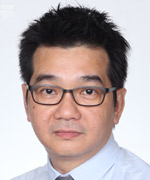 - Eric J.W. Liou
Dr. Eric Liou is an associate professor and the immediate past chairman of the Faculty of Dentistry, Chang Gung Memorial Hospital & Chang Gung University, Taipei, Taiwan. He is also a visiting professor in the Department of Orthodontics, Showa University, Tokyo, Japan. For the profession affiliations, Dr. Liou was the president of the Taiwan association of Orthodontists 2015-2016, and is the immediate past president of the World Implant Orthodontic Association (WIOA). Currently, he is the Vice President of the Asian Pacific Orthodontic Society (APOS) and an editor of the APOS Trends in Orthodontics, and Secretary General of the WIOA. His main clinical and research interests are TADs, orthodontic tooth movement, platelet rich plasma (PRP) and bone physiology, and surgical and non-surgical innovative approaches for canting, facial asymmetry, or Class III malocclusion. Dr. Liou has numerous presentations especially on the topics of Class III orthognathic camouflage treatment, treatment of occlusal cant and facial asymmetry with yin-yang arch wires, accelerated orthodontic tooth movement with PRP, maxillary orthopedic protraction, surgery first orthognathic approach, and TADs.
Abstract
Mandibular prognathism and/or maxillary hypoplasia are the two most common features in pubertal patients with Class III malocclusion. Maxillary hypoplasia includes sagittal and/or vertical deficiency. The orthodontic camouflage treatment or orthopedic maxillary protraction in growing Class III patients usually focuses on the sagittal improvement of anterior cross bite and maxillary growth, but seldom on the maxillary vertical deficiency and control of mandibular growth. Furthermore, the subsequent relapse & cease of maxillary sutural growth after maxillary protraction, and outgrowth of mandible during puberty are substantially unsolved problems. Although we are not able to reduce the growth amount of mandible, the purpose of this presentation is to propose innovative thoughts and clinically feasible techniques for redirecting mandibular growth inferiorly and even posteriorly, and at the same time redirecting maxillary growth anteriorly and inferiorly by surface remodeling of maxilla (periosteal growth of maxilla). The rationales, clinical studies, and cases illustrations will be presented.
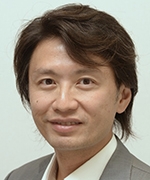 - Tsang Tsang, Franklin She
Professional experience and education
| 2004-2019 |
Owner, The Smile Clinic Orthodontic Center Limited, Hong Kong |
| 2002-2019 |
Part-time clinical Lecturer, The University of Hong Kong |
| 2014 |
Biomechanics summer course, Italy |
| 1999-2002 |
Master in Orthodontics, The University of Hong Kong |
Research interest
Bone biology
Orthodontics camouflage of dentofacial deformites
TADs and Segmented arch technique
Abstract
Two female patients presented with gummy smile, maxillary dentoalveolar protrusion and total vertical maxillary excess, retroclined incisors, and increased overbite received orthodontic camouflage with straight wire mechanics by general dentists. The treatments caused severe bowing of upper occlusal plane which aggravated the gummy smile and had led them to seek specialist care. They were successfully managed by orthodontic camouflage and combined surgical orthodontic treatment, respectively, in conjunction with the application of miniscrews on straight wire mechanics. Aggravation of gummy smile by straight wire mechanics, use of visual treatment objective to differentiate between orthodontic camouflage and surgical cases, and LeFort I segmentalization were discussed.
|
JWFO Session
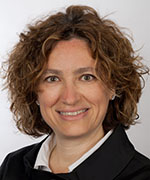 -
Carlalberta Verna
Professional experience and education
| 1989 |
DDS, Faculty of Medicine , School of Dentistry, University of Ferrara, Italy |
| 1993-1996 |
PhD in preventive orthodontics, department of Orthodontics, School of Dentistry, University of Florence, Italy |
| 1996-1999 |
PhD in Odontology, Section of Orthodontics, Institute of Dentistry, University of Aarhus, Denmark |
| 1999-2002 |
Post-graduate degree in Orthodontics, Section of Orthodontics, Institute of Dentistry, University of Aarhus, Denmark |
| 2002-2012 |
Associate Professor, Section of Orthodontics, Institute of Dentistry, University of Aarhus, Denmark |
| January 2013 - |
Professor and Head Clinic for Pediatric Oral Health and Orthodontics, University Center for Dental Medicine, UZB, University of Basel, Switzerland |
Honors and Awards
Alice L. Jee Memorial Award for junior investigators. International Sun Valley Workshop on Hard Tissues, Sun Valley, Idaho, USA, 1998
W.H.B. Houston research award European Orthodontic Society, 1999
W.J.B. Houston scholarship from the European Orthodontic Society 2000-2003
Beni Solow award European Journal of Orthodontics 2004
Italian Orthodontic Society for the best scientific paper in 2006
Houston award for the best poster presentation European Orthodontic Society, 2006
Beni Solow award European Journal of Orthodontics 2009
Research interests
Biology of tooth movement, biomechanics, craniofacial anomalies
Abstract
The achievement of a planned tooth movement is the result of the interaction between variables related to the orthodontist and variables related to the patient. The orthodontist plans the individual biomechanical system in relation to the centre of resistance of one tooth or groups of teeth. It is known that the location of the centre of resistance varies according to the patients' anatomical characteristics; the anatomy of the supporting tissues and the shape of the roots. The quality of the supporting tissues in terms of bone density has seldomly been taken into consideration as potential variable that could influence the location of the centre of resistance. Surgically facilitated orthodontic tooth movement is one of the various attempts of orthodontists to influence patients' response to enhance tooth movement rate. The principle is based on the local acceleration of bone remodelling activities occurring in bone repair processes, where bone density is initially decreased. Accelerated bone turnover in animal models has shown to increase tooth movement rate and the application of a single force induces a controlled rather than an uncontrolled tipping, as would under normal bone turnover conditions. A Finite Element analysis of tooth movement after corticotomy revealed that translation in corticotomized teeth occurs at a larger M/F ratio compared to normal bone turnover. In order to achieve this, a bigger moment needs to be inserted into the wire.
JWFO Session
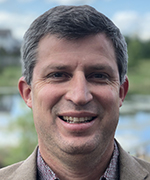 -
Carlos Flores Mir
H-Index
53 Google Scholar - 32 Scopus - 31 Web of Science
Education
DDS (Universidad Peruana Cayetano Heredia ? Peru - 1994)
Certificate in Orthodontics (UPCH ? Peru - 1998)
BSc in Stomatology (UPCH ? Peru - 1994)
MSc in Stomatology (UPCH ? Peru - 1999)
DSc in Stomatology (UPCH ? Peru - 2002)
Postdoctoral Fellowship (University of Alberta- Canada - 2005)
Employment
Tenured Professor at the University of Alberta Extramural Private Practice in Edmonton, Canada
Current Position
Orthodontic Program Director, University of Alberta (since 04/10)
Head of the Division of Orthodontics, University of Alberta (04/10 to 06/17)
Assistant Editor, The Angle Orthodontist (Since 04/12)
Assistant Editor, Dental Press Journal of Orthodontics (Since 01/15)
Assistant Editor, Journal of World Federation of Orthodontics (Since 04/17)
Presentations
More than 120 international presentations around the topics of Clinical Orthodontics, Evidence-based Dentistry and Evidence-based Orthodontics (Argentina, Australia, Bolivia, Belgium, Brazil, Canada, Colombia, Chile, Costa Rica, Germany, Iceland, Israel, Italy, Mexico, Netherlands, Panama, Paraguay, Peru, Poland, Romania, Uruguay, USA, Scotland, Switzerland and Spain)
Major Teaching awards
2014 Department of Dentistry, Gibb Teaching Scholar Award, 2010 Faculty of Medicine and Dentistry, University of Alberta ? Tier II Clinical Award for Excellence in Mentoring Student, 2007 Association of Canadian Faculties of Dentistry (ACFD) - W. W. Wood Award for Excellence in Dental Education
Publications
6 book chapters related to Evidence-based Dentistry 280 peer-reviewed articles and 37 commentaries published.
Abstract
This presentation will explore how recently published evidence (systematic reviews and randomized clinical trials) focused on impacted teeth has impacted my day to day clinical decisions when faced with a potential impacted canine. The following questions will be explored:
Does CBCT make always a difference? - diagnosis focus
Is there a better outcome if a specific surgical exposure approach is used? - management focus
Is it always worth to attempt to tract the impacted tooth down? - prognosis focus
Can early extraction of deciduous canines reduce the chances of permanent canine impaction? - prognosis focus
Clinical cases will be shown to facilitate the conversation.
|
10th IOC Promotion
-
 - Flavia Artese
|
JOS Session
-
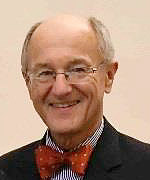 - James L. Vaden
-
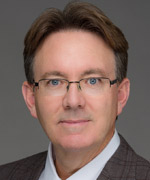 - Will A. Andrews
-
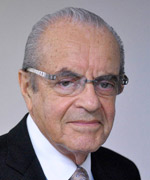 - Carl F. Gugino
|
Continuing Educational Seminar (Japanese session)
-
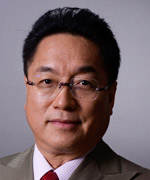 - Morio Tonogi
-
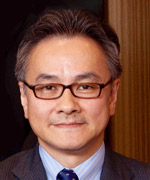 - Shigeru Sakurai
|
|
Closing Ceremony
|



















































